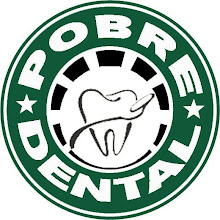Fixed Partial Denture
A tooth-borne partial denture that is intended to be permanently attached to the teeth or roots that furnish support to the restoration.
Advantage: good esthetically
Disadvantage: not as strong as porcelain fused to metal crown, require more tooth reduction
A porcelain-fused-to-metal crown (PFM) could be considered to be a hybrid of the other types of crowns, in the sense that it is composed of two different types of materials. One is a metal alloy that is used to create that portion of the crown that fits directly on the tooth. The other is porcelain. The porcelain forms the tooth-shaped aspect of the crown and gives the crown a white tooth-like coloration.
All Metal Crown
A metal dental crown is stronger than a porcelain restoration and even stronger than the original tooth enamel coating. The area of the mouth with the highest chewing force is in the second molar area. The masseter muscle ( beaver muscle ) attaches right over the second and third molar area so that there's a great deal of force applied to these teeth. The second molar area is also very hard to see so having metal is not a big esthetic problem.
The surface of a metal dental crown can be highly polished so that the gum tissues will grow up onto the restoration. There are several choices for the type of metal used. Gold is the most popular dental casting alloy but many dentists also use a silver palladium alloy. Besides color, the only other disadvantage is that it conducts hot and cold temperatures. This is not important if the tooth has had a root canal but can be bothersome for several months with a living tooth.
Since gold or silver alloys are strong, the dentist can take less tooth structure off to make room for a metal dental crown. Whenever possible, it is always a good thing to conserve natural tooth material. This type of restoration is particularly good in patients that suffer with tooth grinding problems. The metal surfaces help prevent excessive wear and help support the adjacent teeth.
The surface of a metal dental crown can be highly polished so that the gum tissues will grow up onto the restoration. There are several choices for the type of metal used. Gold is the most popular dental casting alloy but many dentists also use a silver palladium alloy. Besides color, the only other disadvantage is that it conducts hot and cold temperatures. This is not important if the tooth has had a root canal but can be bothersome for several months with a living tooth.
Since gold or silver alloys are strong, the dentist can take less tooth structure off to make room for a metal dental crown. Whenever possible, it is always a good thing to conserve natural tooth material. This type of restoration is particularly good in patients that suffer with tooth grinding problems. The metal surfaces help prevent excessive wear and help support the adjacent teeth.








Hi,
ReplyDeleteThanks for your nice posting keep it up, Using the latest Technologies as Crown And Bridge in Dental Laboratories, doing work hard.
thanks for sharing!!!